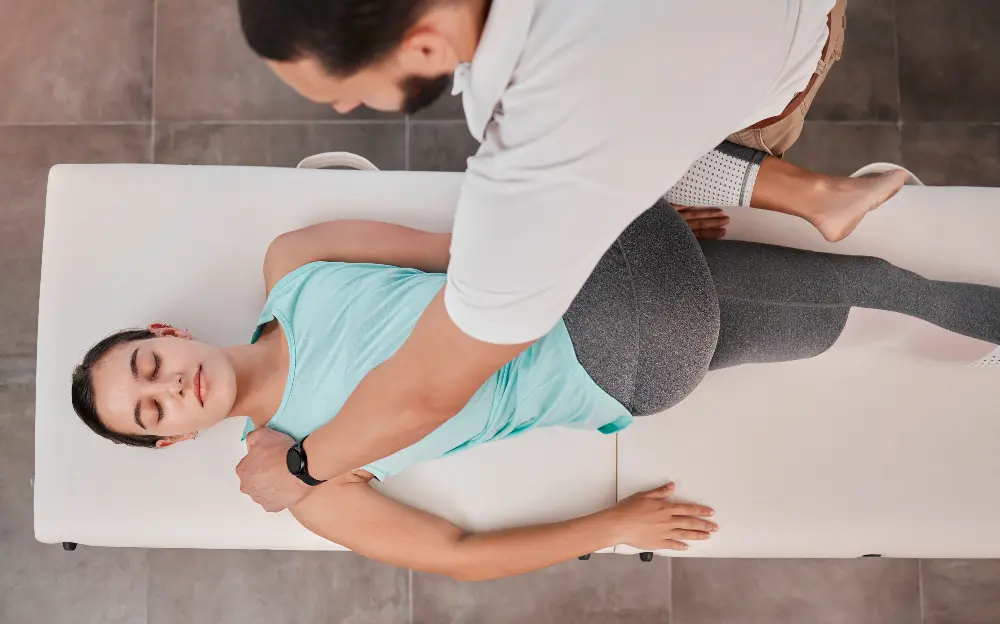You’ve done your homework, and you know what to expect during regenerative medicine treatment. When it comes to regenerative therapies like PRP (platelet-rich plasma) injections or orthobiologic treatments, the success of your recovery doesn’t end after the procedure. Proper aftercare plays a crucial role in maximizing long-term pain relief and ensuring the best possible results.
This guide outlines essential aftercare practices, gentle exercises to support healing, and answers frequently asked questions about recovery.
Why Proper Aftercare Matters
Regenerative therapies tap into your body’s natural healing mechanisms to revitalize tissue, reduce inflammation, and improve function. After the procedure, inflammation acts as the scaffolding where cells regenerate and repair. While some swelling is natural and even helpful, unbalanced activity levels can hinder the healing process.
Overactivity can heighten inflammation prematurely, while too much rest can slow blood flow and healing. Striking the right balance ensures optimal results and helps you avoid setbacks.
General Aftercare Guidelines
Following regenerative therapy, it’s essential to give your body the care and attention it needs to recover properly. Adhering to these aftercare guidelines supports the regenerative treatment process and sets you up for lasting relief and improved mobility.
Week 1–2: Rest and Gentle Movement
During the first two weeks, your primary goals are to minimize inflammation and support your body with light, deliberate movements.
- Listen to Your Body: Use discomfort, rather than pain, as your guide. Ease up on activities that intensify soreness.
- Avoid Anti-Inflammatory Medications: Over-the-counter NSAIDs (non-steroidal anti-inflammatory drugs) can interfere with the natural healing process. Acetaminophen is a safer alternative for managing discomfort.
- Cold vs. Heat Applications: Cold therapy can reduce swelling immediately post-treatment, while heat can soothe stiffness after 48–72 hours. Alternate based on your provider’s advice.
Weeks 3–6: Progressive Activity
This is the time to reintroduce controlled, low-impact activities gradually. These activities should encourage blood flow and joint mobility without straining the treated area.
- Low-Impact Cardio: Walking, using a stationary bike, or light swimming accelerates circulation and promotes recovery.
- Gentle Stretching: Begin incorporating range-of-motion (ROM) exercises to loosen stiffness and improve flexibility.
Beyond Week 6: Strengthening & Maintenance
Once cleared by your provider, focus on rebuilding strength and maintaining joint health.
- Light Resistance Training: Use resistance bands or light weights to build muscle strength around the treated area.
- Core Stabilization Exercises: Improving your core strength supports better posture and reduces strain on joints.
Recommended Post-Treatment Exercises
Gentle exercises are a cornerstone of regenerative therapy recovery. They support circulation, stabilize joints, and minimize stiffness.
Gentle Stretching Routines
- Hamstring Stretch: Sit on the floor with one leg extended. Reach toward your toes, keeping your back straight. Hold for 10–15 seconds.
- Hip Flexor Stretch: Kneel on one leg with the other foot forward. Shift your weight forward until you feel a stretch in your hip.
- Calf Stretch: Stand facing a wall. Place one foot back and press the heel down while leaning into the stretch.
Core and Stability Work
- Pelvic Tilts: Lie on your back with knees bent. Gently tilt your pelvis upward, tightening your abdominal muscles.
- Glute Bridges: Lie on your back, knees bent. Lift your hips toward the ceiling and lower slowly.
- Body-Weight Exercises: Movements like planks or side planks improve stability while protecting revitalizing tissues.
Aquatic or Pool-Based Movements
If you have access to a pool, use the buoyancy to complete movements like water walking or gentle kicks. Aquatic therapy reduces strain on joints while promoting mobility.
What to Avoid During Recovery
While rebuilding your strength and mobility, it’s equally important to avoid mistakes that could jeopardize your progress.
- Heavy Lifting or High-Impact Activities: Running, jumping, or contact sports can place unnecessary stress on mending tissue.
- Forceful Movements: Avoid twisting or jerking motions, especially involving your back or larger joints.
- NSAIDs: Resist the urge to take anti-inflammatory medications, as they can hinder the regenerative process in the early weeks.
Nutrition & Lifestyle Tips
Supporting regenerative therapy also involves what you put into your body. Nutritional and lifestyle habits can amplify healing.
- Stay Hydrated: Aim for at least eight cups of water daily to support cell function and recovery.
- Prioritize Protein-Based Foods: Lean meats, eggs, and plant proteins provide essential building blocks for tissue repair.
- Fill Up on Antioxidants: Foods like berries, dark leafy greens, and nuts reduce oxidative stress on tissues.
- Sleep Hygiene Matters: Aim for seven to nine hours of quality sleep to promote cell regeneration.
- Manage Stress: Activities like meditation or deep breathing reduce cortisol, which can slow healing.
Real Patient Experience
At QC Kinetix, our patients’ journeys toward recovery are as unique as their needs. Here’s how regenerative therapy has helped real people regain their mobility and enjoy life again.
- Boddy S. arrived at QC Kinetix struggling with severe knee pain that made even walking a challenge. After undergoing four or five treatments, everything changed. Not only can Boddy now walk comfortably, but they’ve also returned to biking, dancing, and using weight machines.
- For Tate P., knee pain was standing in the way of their gym routine. Given no other option than to limit exercise by an orthopedic doctor, Tate turned to QC Kinetix. Following a series of injections, Tate is back to performing deep squats without issue, fully enjoying workouts again.
- Meanwhile, Dan N. sought relief for debilitating shoulder pain, choosing QC Kinetix over surgery. After completing their last procedure, Dan reported being pain-free and is now excited about building strength in the months ahead.
At QC Kinetix, we focus on empowering people to rediscover activities they love by supporting their body’s natural healing processes. These stories are just a glimpse of what could await you on your path to recovery.
Frequently Asked Questions
What is regenerative therapy aftercare, and why is it important?
Regenerative therapy aftercare refers to the recovery steps you take after a treatment like PRP injections or orthobiologics. It promotes optimal healing and helps avoid injuries or complications.
How long does PRP injection recovery take, and what should I expect?
There is little to no recovery (and no down time) from the actual injection itself. You may experience some mild soreness or swelling at the injection site but, unlike surgery, regenerative medicine treatments do not create additional injuries your body must heal. After PRP injections, your body’s own healing process will take several weeks to reduce your pain, with the greatest improvements seen in 6 to 12 weeks. Expect some swelling during the first weeks, followed by gradual improvements in mobility and pain reduction.
Which exercises are safe during orthobiologic aftercare?
Gentle stretches, core-strengthening moves like pelvic tilts, and aquatic therapy are all safe options once cleared by your provider.
When can I resume normal activities after regenerative treatment?
Low-intensity daily activities like walking can usually resume quickly, but high-impact exercises should wait until at least Week 7 or when your provider approves.
What common mistakes should I avoid during the recovery process?
Avoid overexertion, skipping prescribed exercises, or ignoring hydration and nutrition recommendations.
Partner with QC Kinetix for a Guided Recovery and Lasting Relief
Regenerative therapy aftercare is a vital component of achieving long-term pain relief and mobility. Follow these best practices to create the optimal environment for healing.
Are you ready to explore how regenerative medicine can improve your quality of life? Schedule a personalized consultation with QC Kinetix today to put yourself on the path to recovery with a customized treatment and aftercare plan.
Take these steps seriously, and give your body the support it needs to thrive. Healing is a process, but with the right approach, relief is well within reach!
Medical Disclaimer:
This content is for informational purposes and not a substitute for professional medical advice. Always consult your healthcare provider before beginning any new treatment.


